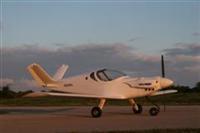etsisk
En-Route
I've been thinking a lot about building a Personal Cruiser (click on Personal Cruiser) - single seat, but good speed and a fair amount of room in there (me like elbow room!).

Y'all might have noticed the v-tail.
Sonex makes the Waiex (pronounced "Y-ex" - a y-tailed sort of plane (though it's a bit different from the Cruiser).

I'm interested in hearing what folks have to say about planes with tails like these - I'm not "Mr. Aeronautical Engineer" guy, so if I want to know, I gotta ask! And I'm asking everyone on all the boards, 'cause not everyone reads red, blue and purple!
And I'm asking everyone on all the boards, 'cause not everyone reads red, blue and purple!

Y'all might have noticed the v-tail.
Sonex makes the Waiex (pronounced "Y-ex" - a y-tailed sort of plane (though it's a bit different from the Cruiser).

I'm interested in hearing what folks have to say about planes with tails like these - I'm not "Mr. Aeronautical Engineer" guy, so if I want to know, I gotta ask!

